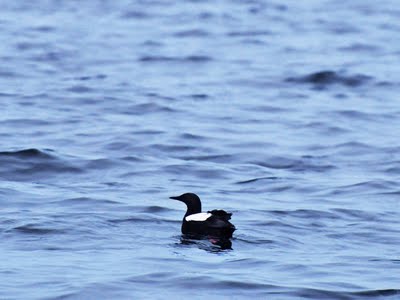The Red Eye of a Vireo Among Dogwood Leaves
Thursday, August 27th, 2009A mostly cloudy day, very warm and humid, but breezy. Highlights from a late morning walk included two Gray Catbirds mewing in the old field, a handsome Brown Thrasher sitting quietly among the branches of a weedy bush, a White-eyed Vireo singing a surprisingly rich song in a thicket, and about a dozen Chimney Swifts swarming against the clouds and chattering as they swept over, at first very high, then coming down low over the road around me.
A small flock of little birds in one grassy yard all scattered up into the branches of trees when I got too close. Among them were at least one juvenile Bluebird, looking very wide-eyed, sturdy and alert, and one juvenile Phoebe, looking rather rumpled and scruffy.
But the most memorable sighting today was a stunning Red-eyed Vireo in a large dogwood tree on the edge of a thicket. I saw it fly into the tree, but it was a few minutes before I could find it rustling among the thick leaves. When I did finally see it, it was a very close-up, clear view. The light must have been just right, coming through a break in the dogwood leaves, which were dense, but curled and fading, with lots of berries, a few already red. The Vireo looked sleek, with greenish back, creamy white breast and belly, and a pale, very faint wash of yellow below the wings and tail, a smooth gray head, elegant white eye-stripe and thin black eye-line – and the best part was a gleaming, ruby-red eye, something I’ve seldom been close enough to see.


